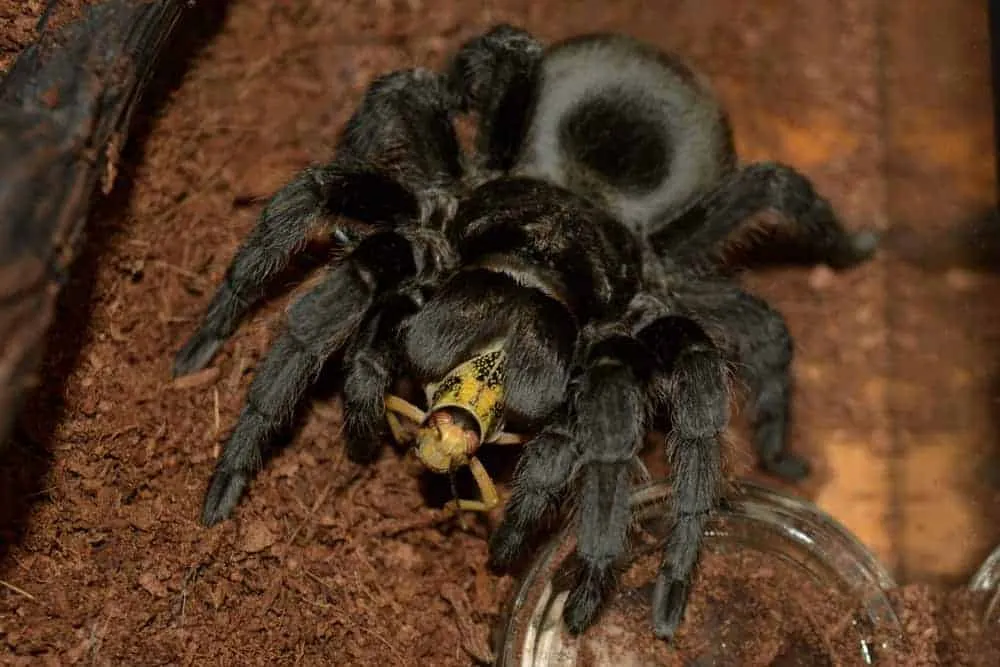What is a Black Dwarf Tarantula?
The Black Dwarf Tarantula, scientifically known as Cyriocosmus nigroventris, is a captivating and relatively small species of tarantula. Native to South America, particularly in regions like Brazil and Venezuela, this spider is gaining popularity among arachnid enthusiasts due to its manageable size, striking appearance, and relatively docile temperament. Unlike some of its larger, more intimidating cousins, the Black Dwarf Tarantula offers a unique charm, making it an appealing choice for both novice and experienced keepers. Their compact size makes them perfect for apartment living and offer a great introduction to the world of tarantula keeping.
Appearance and Size of the Black Dwarf Tarantula
As the name suggests, the Black Dwarf Tarantula is indeed a small species. Adults typically reach a leg span of only about 1 to 1.5 inches (2.5 to 3.8 cm). Their coloration is primarily black, with a velvety appearance, and they often have subtle variations in the shade of black. Their bodies are covered in fine hairs, which add to their striking appearance. Mature females tend to be slightly larger than males. This compact size is one of their most appealing features, making them suitable for those with limited space or those who prefer a less daunting pet. The black coloration, combined with their small size, gives them a unique aesthetic appeal in the tarantula world.
The Black Dwarf Tarantula’s Natural Habitat
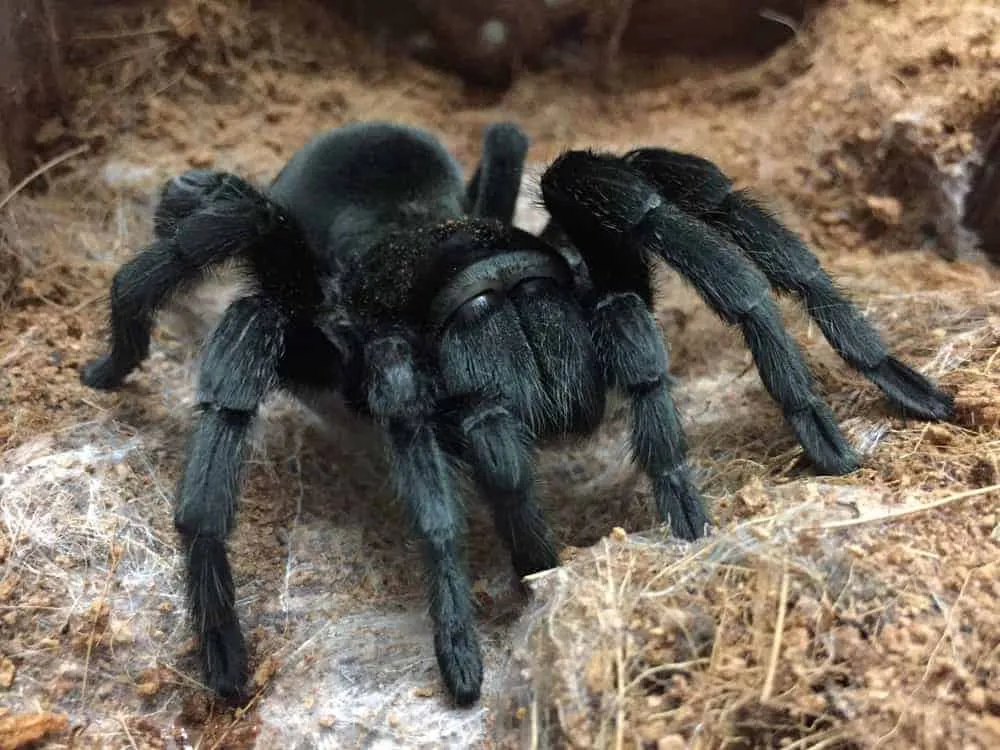
In the wild, Black Dwarf Tarantulas are found in the tropical rainforests of South America. They are terrestrial spiders, meaning they live on the ground, and they are known to burrow. These tarantulas prefer environments with high humidity and a warm climate. They create burrows in the leaf litter and soil, providing them with shelter from predators and the elements. Understanding their natural habitat is crucial for providing the proper care in captivity. Replicating these conditions ensures the tarantula’s health and well-being. The ideal setup in captivity will mimic these conditions to ensure the tarantula thrives.
Diet and Feeding Habits of the Black Dwarf Tarantula
Black Dwarf Tarantulas are primarily insectivores, meaning their diet consists mainly of insects. In the wild, they feed on a variety of insects they can find in their habitat. In captivity, they readily accept a diet of crickets, mealworms, and other commercially available insects. The frequency of feeding depends on the tarantula’s size and age; spiderlings will need to be fed more often than adults. It’s important to offer a varied diet to ensure the tarantula receives all the necessary nutrients. Avoid feeding them insects that are too large, as this can stress the tarantula. Clean, fresh water should always be available. The right diet will contribute greatly to your tarantula’s health and longevity.
How to Care for a Black Dwarf Tarantula
Caring for a Black Dwarf Tarantula is relatively straightforward, making it a good choice for those new to tarantula keeping. The primary requirements include a suitable enclosure, appropriate substrate, proper humidity and temperature, and a consistent feeding schedule. Maintaining the right environmental conditions is critical for their health. They are not high-maintenance pets, but proper care is essential. A well-cared-for tarantula can bring years of enjoyment. This will ensure your tarantula lives a long and healthy life, providing a fascinating glimpse into the arachnid world.
Tank Setup and Environment
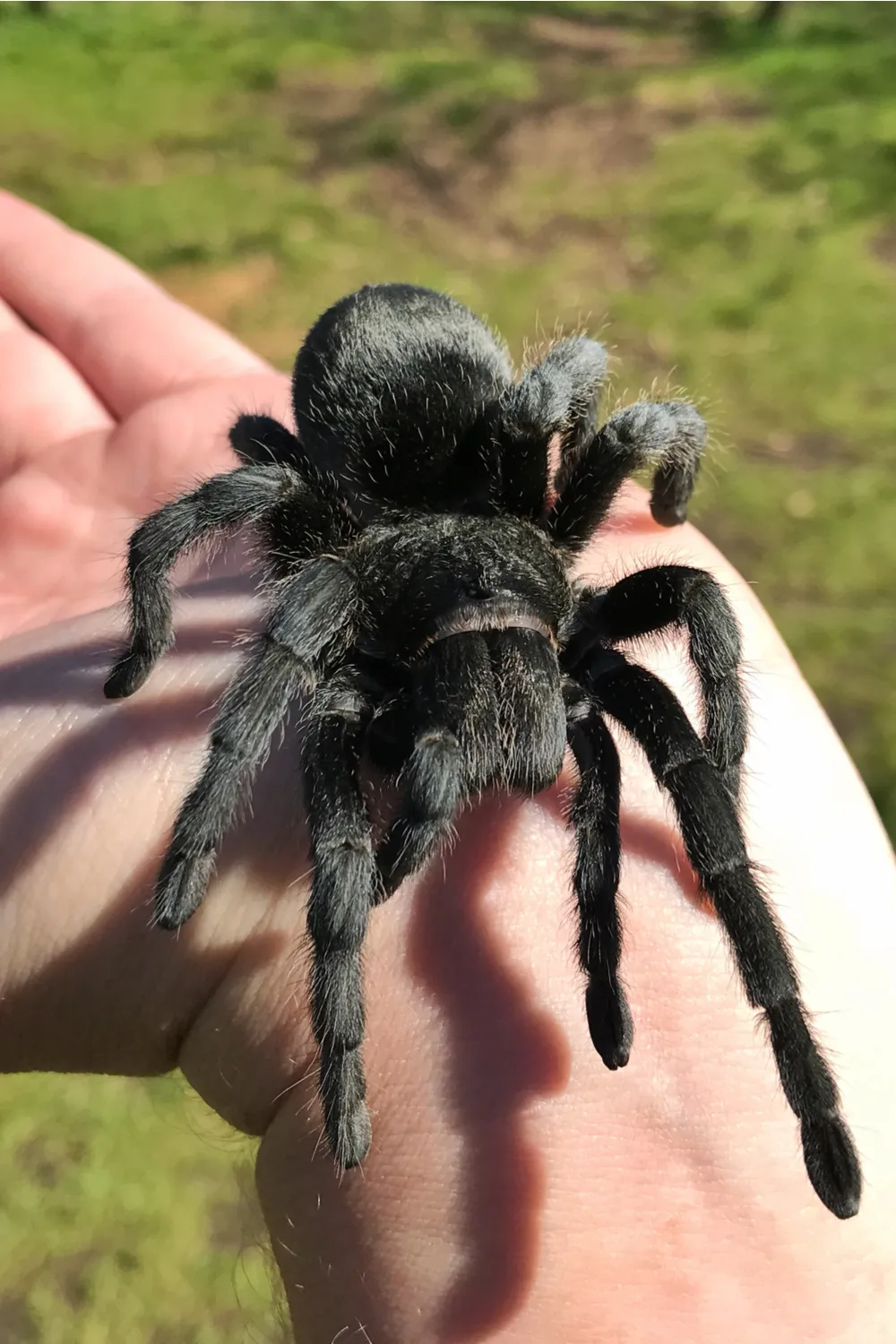
A suitable enclosure is essential. A 5-10 gallon terrarium is typically sufficient for an adult Black Dwarf Tarantula. The enclosure should have a secure lid to prevent escape. The substrate should be a mix of coco fiber, peat moss, and a little bit of vermiculite to help hold moisture and allow for burrowing. Maintain a humidity level of around 70-80% by misting the enclosure with water regularly. Temperature should be kept between 75-80°F (24-27°C). Provide a shallow water dish for drinking. A small piece of cork bark or a similar hiding place is beneficial to make the tarantula feel secure. Ventilation is also key, ensuring airflow while maintaining humidity.
Feeding Your Tarantula
As mentioned before, Black Dwarf Tarantulas are insectivores, and their diet primarily consists of insects. Crickets and mealworms are readily accepted. The size of the prey should be appropriate for the size of the tarantula, so the food should be roughly the size of the tarantula’s abdomen. Feed spiderlings 2-3 times a week, while adults can be fed once or twice a week. Remove any uneaten prey within 24 hours to prevent stress on the tarantula and maintain cleanliness in the enclosure. Ensure that any insects offered as food are gut-loaded before being fed to your tarantula, providing them with essential nutrients. This helps the tarantula receive the best possible nutrition.
Handling and Safety Precautions
Black Dwarf Tarantulas are generally docile, but they can still bite if they feel threatened. Handling should be kept to a minimum and done with extreme caution. Never handle a tarantula if you are unsure. Wash your hands thoroughly before and after handling the tarantula or working in the enclosure. Always be aware of the tarantula’s location and behavior. A bite from a Black Dwarf Tarantula is not considered medically significant, but can cause localized pain, redness, and swelling. Avoid sudden movements, and do not drop the tarantula. Observe your tarantula regularly for any signs of stress or discomfort.
Health and Common Issues
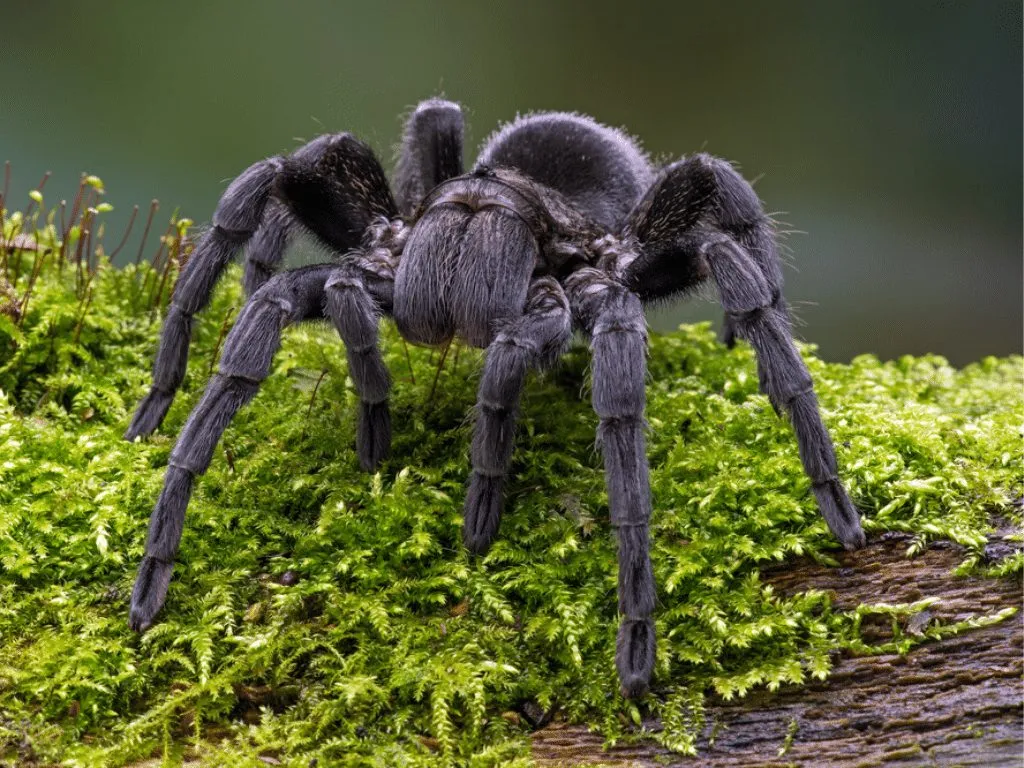
Black Dwarf Tarantulas are relatively hardy, but they can still be susceptible to certain health issues. Parasites, such as mites, can be a problem, and can be introduced from new substrate or live insects. Ensure that the enclosure and all materials are clean. If you notice mites, isolate the tarantula and consult a veterinarian or experienced tarantula keeper. Improper humidity can lead to molting problems; ensure proper moisture levels within the enclosure. Always research and monitor your tarantula’s behavior and appearance for any changes that may indicate a health problem. Regular observation is key to early detection and treatment.
Lifespan and Growth of the Black Dwarf Tarantula
The lifespan of a Black Dwarf Tarantula varies depending on the sex. Females generally live longer than males. Females can live for 5-7 years, while males typically live for 1-2 years after reaching maturity. Growth occurs through molting; the tarantula sheds its exoskeleton to grow. Spiderlings molt more frequently than adults. During the molting process, the tarantula is vulnerable. Do not disturb the tarantula during molting. The size of the tarantula will increase after each molt. Keep track of the molting frequency to assess their growth and development.
Unique Characteristics of Black Dwarf Tarantulas
Black Dwarf Tarantulas have a few unique characteristics. One of the most interesting is their defensive behavior. They may flick urticating hairs from their abdomen as a defense mechanism, which can cause irritation if it comes into contact with the skin. They are also known for their relatively docile temperament compared to other species. This makes them a good choice for those new to tarantula keeping. Their small size and easy-to-manage care requirements make them an excellent pet option. Their striking black appearance is another unique feature. Observing their behavior can be highly rewarding.
Molting Process
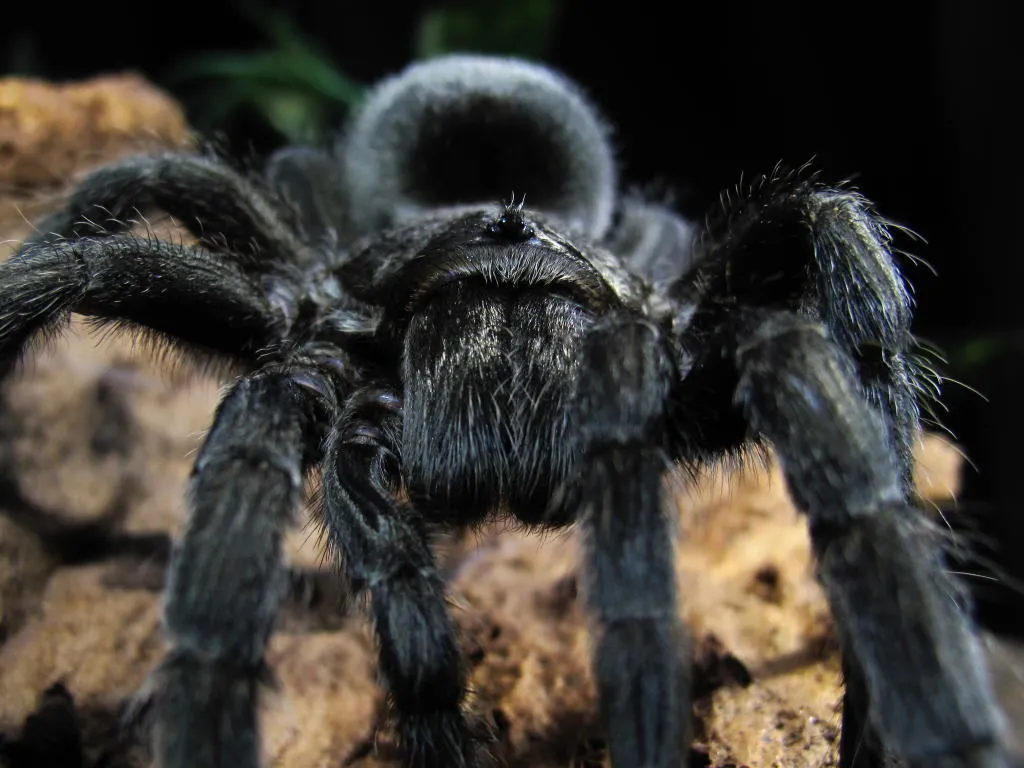
Molting is the process by which tarantulas shed their exoskeletons to grow. During molting, the tarantula will typically stop eating and become inactive. The spider will lie on its back and gradually extract itself from its old exoskeleton. This can be a stressful time, so it is essential to provide a calm and undisturbed environment. Ensure the humidity is correct during the molting process. After molting, the tarantula will be very soft and vulnerable, and it can take several days for the new exoskeleton to harden. Do not feed the tarantula until the new exoskeleton is fully hardened. After the molt, the tarantula will also grow larger.
Defense Mechanisms
Like all tarantulas, Black Dwarf Tarantulas have defense mechanisms. They may flick urticating hairs from their abdomen if they feel threatened. These hairs can cause skin irritation and should be avoided. They can also bite as a last resort. However, due to their docile nature, this is uncommon. Providing a suitable environment and avoiding unnecessary handling reduces the likelihood of a defensive response. The Black Dwarf Tarantula’s primary defense is their speed, the spider prefers to hide rather than fight. It is always advisable to be cautious and respectful when interacting with any tarantula, regardless of its size or perceived temperament.
Breeding Black Dwarf Tarantulas
Breeding Black Dwarf Tarantulas requires some experience and specialized knowledge. The process begins with mating the mature male and female. Once the female has accepted the male, she will lay eggs in a silken egg sac. The spiderlings, or slings, will hatch after a few weeks. Raising spiderlings requires careful attention to detail, including providing appropriate food and a suitable environment. Breeding tarantulas is a rewarding but challenging undertaking. Those considering breeding should thoroughly research the process and understand the commitment involved. This process can provide an interesting experience for those that understand the risks and requirements.
Identifying a Mature Tarantula
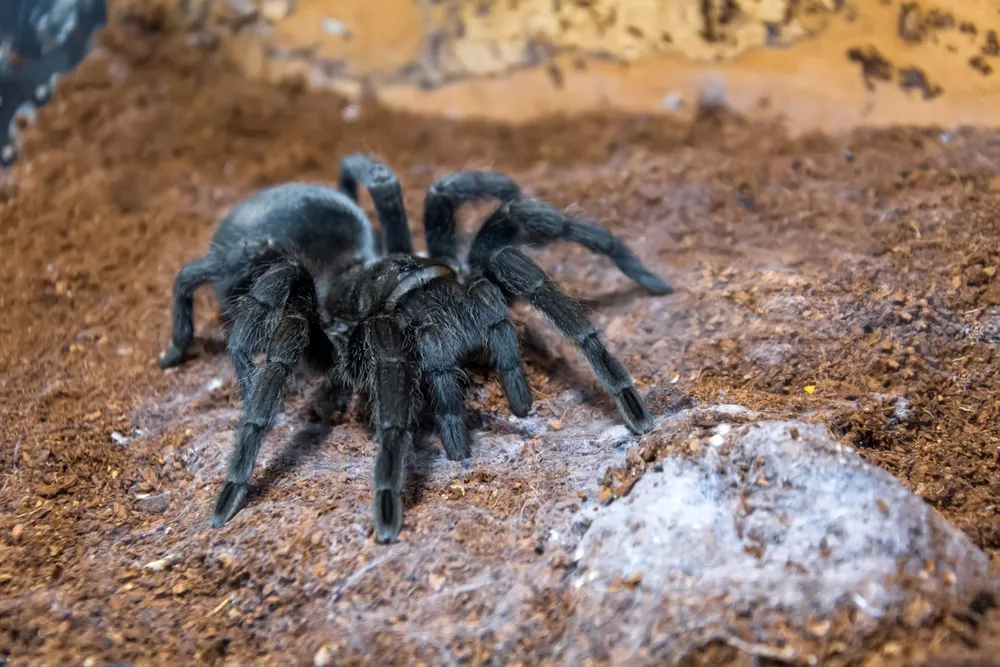
Identifying a mature Black Dwarf Tarantula is a crucial step in the breeding process. The easiest way to identify a mature male is by the presence of tibial hooks on their front legs, which are used to hold the female’s fangs during mating. Mature males also have a more slender appearance compared to females. The female will typically have a larger body and a more robust appearance. Observing the tarantulas closely can help determine their maturity levels. Understanding the differences between mature males and females is essential for a successful breeding program.
Mating Process
Mating Black Dwarf Tarantulas involves a careful approach. The male is usually introduced to the female’s enclosure. The male will approach the female cautiously and engage in courtship behaviors, such as drumming on the ground with his pedipalps. If the female is receptive, she will allow the male to mate. The male will insert his palps into the female’s epigastric furrow. After mating, the male should be removed from the enclosure to prevent the female from attacking him. It is important to monitor the female’s behavior after mating. The female will lay eggs after mating.
Raising Spiderlings
Raising spiderlings requires a significant commitment. The female will create an egg sac containing the eggs, and the spiderlings will hatch from the egg sac after several weeks. The spiderlings will need a separate enclosure with appropriate substrate, humidity, and temperature. They should be fed small insects, such as flightless fruit flies or pinhead crickets. The spiderlings grow quickly and will molt several times before reaching maturity. It’s a demanding process, and requires dedication. Proper care and maintenance will help spiderlings grow and thrive. Providing adequate space and regular feeding are crucial for the spiderlings’ development.
Conclusion
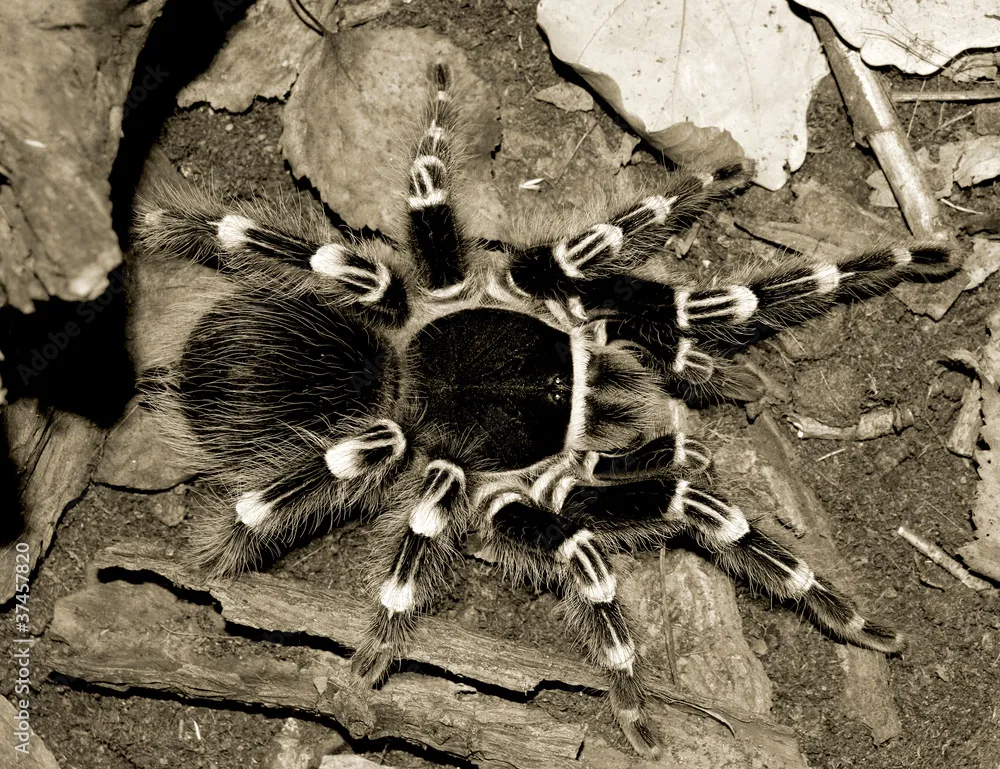
The Black Dwarf Tarantula is a fascinating and relatively easy-to-care-for species. Their small size, unique appearance, and manageable care requirements make them a great choice for beginner and experienced tarantula keepers. Providing a suitable habitat, proper feeding, and understanding their basic needs will ensure that these beautiful creatures can thrive in captivity. With their manageable size and unique characteristics, they continue to be an appealing choice for those interested in the world of arachnids. By following the care guidelines, owners can enjoy the beauty and fascinating nature of this intriguing species.
